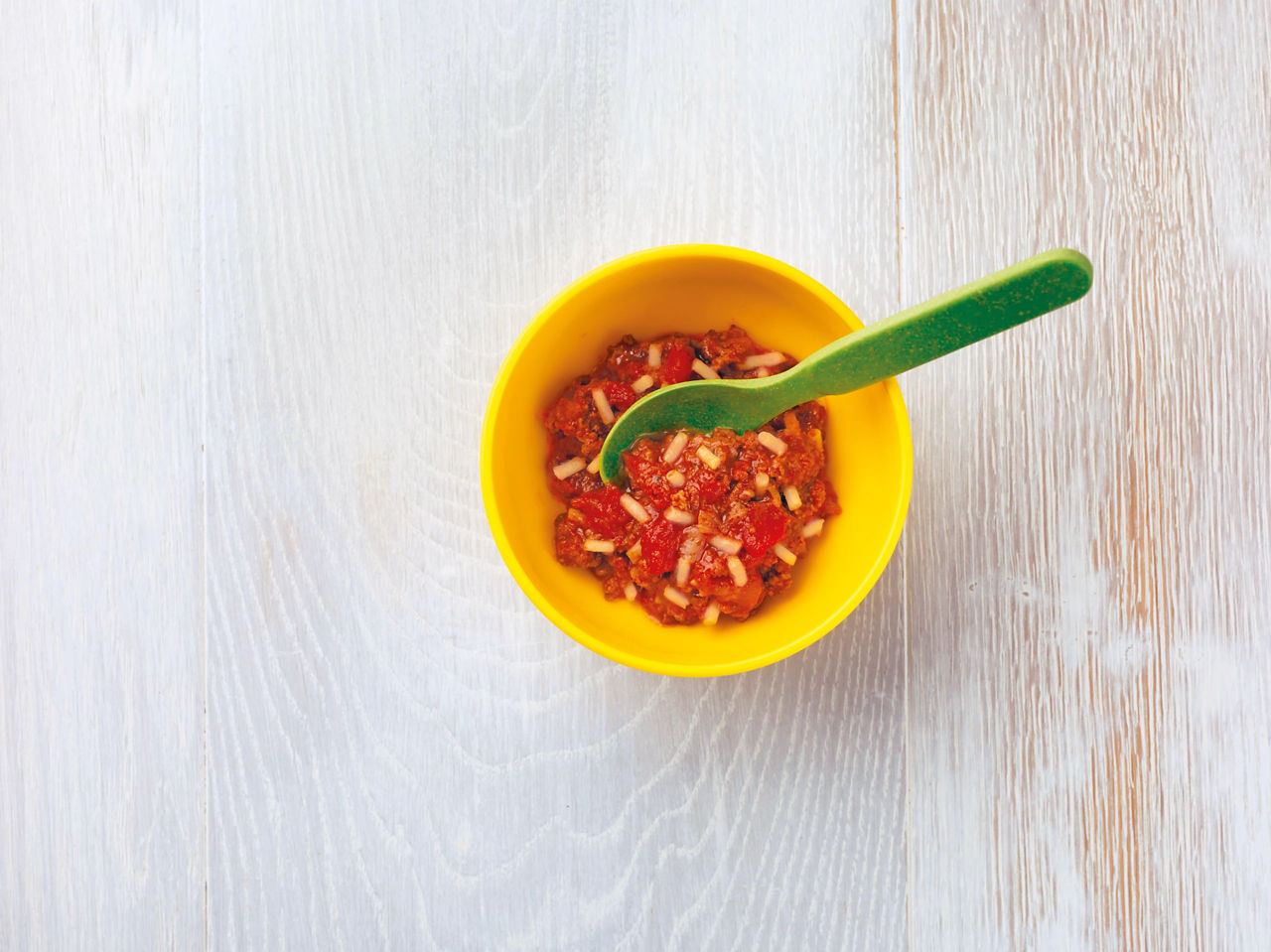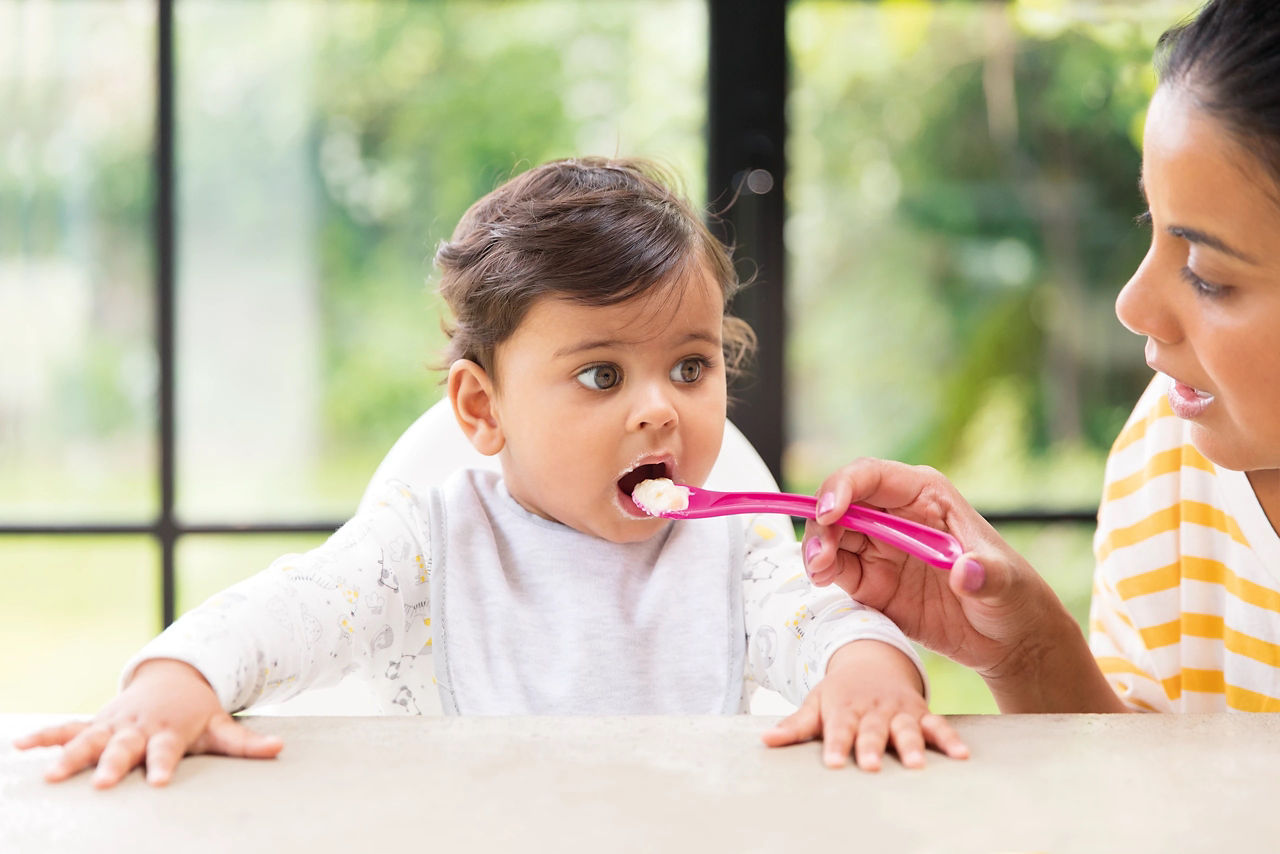Now your baby is becoming more reliant on solid foods to satisfy their appetite and fulfil their nutritional needs, it’s time to establish regular family mealtimes.
When your baby’s happy eating meals with a little more texture, it's also time to move on to meals with small chunks and lumps. Toddlers need fun and variety to keep them interested in their food and they're now ready to chew on more grown-up shapes and textures. Fun shapes will help keep them entertained as they become more independent and learn to feed themselves.









